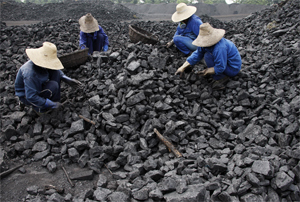 China is obsessed with setting the pace for the world to follow. Except that its stock market failed to pack a punch.
China is obsessed with setting the pace for the world to follow. Except that its stock market failed to pack a punch.
The Shanghai Composite fell 15 per cent in 2010 and remained inside the shadow of its far more spectacular cousins, the vibrant commodities markets.
Will China retain its prominence inside the global commodity vortex in 2011, or will its significance shrink using the expected recovery of US and Europe? Or does China have hidden aspects up its sleeve?
Analysts have been floundering between boom and bust forecasts for commodities in 2011, largely driven by the Chinese government’s decision to place the brakes on unbridled growth inside the subsequent 5 years. Planners’ intention to shift from a “growth at any cost” model to a far more high-value driven economy has already stalled some of the very best commodity marketplace rallies late last year.
But calls for restraint can not dampen optimism. The globe economy will rest on policy makers of China along with the surprise this year may very well be the silently emerging sector of coal-to-chemicals. This could in all probability impact the petrochemical and energy commodity graphs in the lengthy run.
Substitute for oil
Coal to chemicals makes use of coal as raw material as opposed to crude oil, and needs new-generation technology to turn it into gas, liquids, solid fuels along with other chemical items.
The newest developments in China have noticed the production of coal-to-liquids, coal-to-dimethyl ether, coal-to-olefins and coal to SNG all through 2010.
The Chinese coal chemical market has a enormous head-start. It can be backed by intense government interest, laps up new generation technologies from Western multinationals and promotes an entirely new usage pattern for coal.
The increasing price of crude oil has rendered coal a favourite choice to polyolefins, which is in short supply in China.
In a country that requirements to import one-third of its crude consumption, oil is often a strategic resource, and shifting to coal within the petrochemical sector is a significantly needed alternative.
From the price perspective, coal to chemicals enjoys an apparent advantage as oil is 4 times as expensive as coal. Developing coal to chemicals is an inevitable choice in China, a nation characterised by “insufficient oil, small gas and ample coal”.
China has skilled the world’s fastest growth in recent years as a producing and consuming country of polyolefins. As prices of imported oil climbed over the past decade, Chinese chemical makers began making use of domestic coal to create olefins via a route that starts with coal gasification.
Three Western businesses ?a Total Petrochemicals, Celanese, and Dow Chemical – are advancing their cutting edge technologies in coal chemicals to China, lured by the country’s ample supply of coal.
August 2010 was a landmark time when the very first of China’s main coal-based chemical projects started trial operations, spearheaded by the Shenhua Group. Methanol was fed at coal giant Shenhua Baotou’s 600,000 tonnes a year methanol-to-olefins plant in Inner Mongolia. The unit can create 300,000 tonnes a year every single of ethylene and propylene.
The Shenhua Baotou unit is mentioned to be the initial large-scale demonstration plant for this technology inside the planet. A downstream polyethylene (PE) and polypropylene (PP) units is expected to begin soon.
Shenhua Group, the parent of the world’s most valuable coal producer, China Shenhua Power, aims to raise the output of the plant that converts coal into liquid fuel threefold by end-2015.
An additional of China’s coal giants, the Datong Coal Mine Group, plans to target new energy-petrochemical development with a 450,000 tonnes a year methanol-to-propylene and PP project.
Profitable operations at these plants are likely to trigger a fresh wave of coal-to-chemical projects in Western China – a target of its 12th Five-Year Strategy.